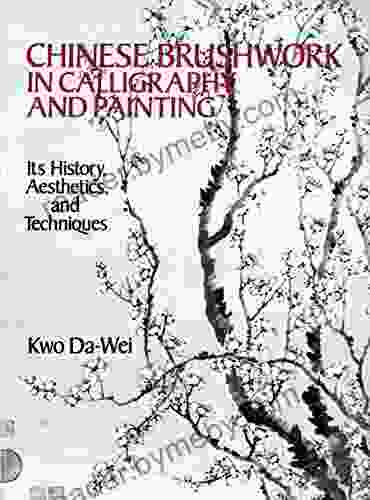Its History Aesthetics And Techniques: An In-Depth Look

Painting is one of the oldest and most universal forms of human expression. From the earliest cave paintings to the masterpieces of the Renaissance, painting has been used to tell stories, record events, and express emotions. In this article, we will explore the history, aesthetics, and techniques of painting.
The history of painting can be traced back to the Paleolithic era, when humans first began to create images on cave walls. These early paintings were often simple representations of animals, humans, and scenes from everyday life. Over time, painting techniques became more sophisticated, and artists began to experiment with different styles and subjects.
In the Middle Ages, painting was primarily used for religious purposes. Artists created frescoes and altarpieces that depicted scenes from the Bible and the lives of the saints. During the Renaissance, painting became more secular, and artists began to explore a wider range of subjects, including portraiture, landscape, and genre painting.
4.5 out of 5
| Language | : | English |
| File size | : | 21778 KB |
| Text-to-Speech | : | Enabled |
| Screen Reader | : | Supported |
| Enhanced typesetting | : | Enabled |
| Print length | : | 395 pages |
| Lending | : | Enabled |
The Baroque period saw the rise of Caravaggio and other artists who used dramatic lighting and exaggerated gestures to create powerful and emotional paintings. In the 18th century, Rococo painters such as Watteau and Boucher created works that were characterized by their grace and elegance.
The 19th century saw the rise of Romanticism and Realism. Romantic painters such as Caspar David Friedrich and J.M.W. Turner created works that emphasized emotion and imagination. Realist painters such as Gustave Courbet and Jean-François Millet depicted scenes from everyday life with a focus on accuracy and detail.
In the 20th century, painting underwent a series of radical changes. Artists such as Pablo Picasso and Georges Braque developed Cubism, which broke down objects into geometric shapes. Abstract Expressionists such as Jackson Pollock and Mark Rothko created works that were characterized by their use of bold colors and gestural brushwork.
The aesthetics of painting is a complex and subjective topic. There is no one right way to paint, and what one person finds beautiful another person may find ugly. However, there are certain general principles that can be used to analyze the aesthetics of a painting.
One of the most important elements of the aesthetics of painting is composition. Composition refers to the arrangement of the elements of a painting, including the placement of the figures, objects, and colors. A well-composed painting will have a sense of balance and harmony, and the viewer's eye will be drawn to the most important elements of the painting.
Another important element of the aesthetics of painting is color. Color can be used to create a variety of effects, including mood, atmosphere, and symbolism. A painting that uses warm colors, such as red, orange, and yellow, will often have a more inviting and cheerful feel than a painting that uses cool colors, such as blue, green, and purple.
Texture is another important element of the aesthetics of painting. Texture refers to the surface quality of a painting, and can be created using a variety of techniques, such as brushwork, impasto, and collage. A painting with a rough texture will often have a more tactile feel than a painting with a smooth texture.
There are a wide variety of techniques that can be used to create a painting. The most common techniques include:
- Oil painting: Oil painting is a technique that uses oil-based paints. Oil paints are slow-drying and allow for a great deal of blending and manipulation.
- Acrylic painting: Acrylic painting is a technique that uses acrylic-based paints. Acrylic paints are water-based and dry quickly, making them ideal for quick and spontaneous painting.
- Watercolor painting: Watercolor painting is a technique that uses watercolor paints. Watercolor paints are water-based and transparent, making them ideal for creating light and airy paintings.
- Gouache painting: Gouache painting is a technique that uses gouache paints. Gouache paints are water-based and opaque, making them ideal for creating bold and flat colors.
- Ink painting: Ink painting is a technique that uses ink. Ink can be used to create a variety of effects, including line drawings, washes, and calligraphic brushwork.
The choice of technique depends on the artist's desired effect. Some techniques are better suited for certain subjects than others. For example, oil painting is often used for landscapes and portraits, while acrylic painting is often used for abstract and modern art.
Painting is a complex and multifaceted art form. It can be used to express a wide range of emotions, ideas, and stories. In this article, we have explored the history, aesthetics, and techniques of painting. We hope that this article has given you a better understanding of this fascinating art form.
4.5 out of 5
| Language | : | English |
| File size | : | 21778 KB |
| Text-to-Speech | : | Enabled |
| Screen Reader | : | Supported |
| Enhanced typesetting | : | Enabled |
| Print length | : | 395 pages |
| Lending | : | Enabled |
Do you want to contribute by writing guest posts on this blog?
Please contact us and send us a resume of previous articles that you have written.
 Book
Book Novel
Novel Page
Page Chapter
Chapter Text
Text Story
Story Genre
Genre Reader
Reader Library
Library Paperback
Paperback E-book
E-book Magazine
Magazine Newspaper
Newspaper Paragraph
Paragraph Sentence
Sentence Bookmark
Bookmark Shelf
Shelf Glossary
Glossary Bibliography
Bibliography Foreword
Foreword Preface
Preface Synopsis
Synopsis Annotation
Annotation Footnote
Footnote Manuscript
Manuscript Scroll
Scroll Codex
Codex Tome
Tome Bestseller
Bestseller Classics
Classics Library card
Library card Narrative
Narrative Biography
Biography Autobiography
Autobiography Memoir
Memoir Reference
Reference Encyclopedia
Encyclopedia Laurie Forest
Laurie Forest Nina Riggs
Nina Riggs Louis Horlick
Louis Horlick Oluwatosin E Adeyemo
Oluwatosin E Adeyemo Nikki Mcclure
Nikki Mcclure Louie Giglio
Louie Giglio Oskar Morgenstern
Oskar Morgenstern Robert Warren
Robert Warren Scotty Ratford
Scotty Ratford Paul Mckendrick
Paul Mckendrick Sally Lewis
Sally Lewis Paul Sahre
Paul Sahre Tom Gauld
Tom Gauld Uri Mcmillan
Uri Mcmillan Kevin Bridges
Kevin Bridges Robert Scheinfeld
Robert Scheinfeld Meg Ripley
Meg Ripley Nathalee Ferguson
Nathalee Ferguson Masato Takeda
Masato Takeda Michael Pedretti
Michael Pedretti
Light bulbAdvertise smarter! Our strategic ad space ensures maximum exposure. Reserve your spot today!
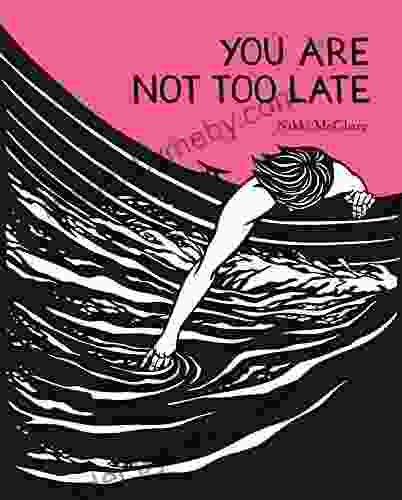
 Fernando PessoaYou Are Not Too Late: A Guide to Overcoming Life's Challenges and Achieving...
Fernando PessoaYou Are Not Too Late: A Guide to Overcoming Life's Challenges and Achieving... Jack ButlerFollow ·18.4k
Jack ButlerFollow ·18.4k Wade CoxFollow ·14.1k
Wade CoxFollow ·14.1k Rob FosterFollow ·6.5k
Rob FosterFollow ·6.5k Haruki MurakamiFollow ·13.6k
Haruki MurakamiFollow ·13.6k Neil GaimanFollow ·3.8k
Neil GaimanFollow ·3.8k Eric HayesFollow ·4.1k
Eric HayesFollow ·4.1k Maurice ParkerFollow ·12.3k
Maurice ParkerFollow ·12.3k Curtis StewartFollow ·9.1k
Curtis StewartFollow ·9.1k

 Wayne Carter
Wayne CarterThe Beginner's Guide to Making an Old Motor Run Forever
If you're like most...
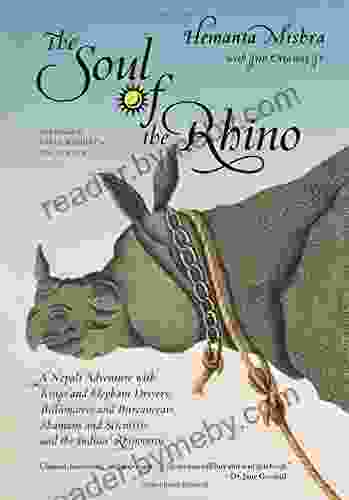
 Deacon Bell
Deacon BellNepali Adventure: Kings and Elephant Drivers,...
In the heart of the...
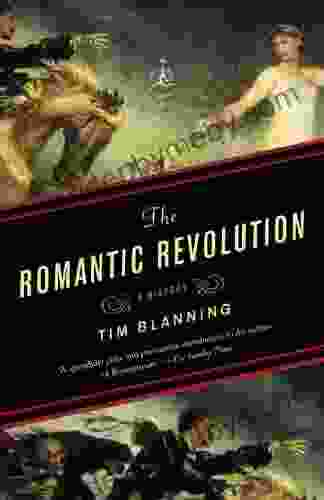
 Carlos Drummond
Carlos DrummondThe Romantic Revolution: A Journey Through History and...
Unveiling the...

 Kazuo Ishiguro
Kazuo IshiguroUnlock Your Inner Innovator: Dive into the New Wave...
Embark on a Transformative Journey of...
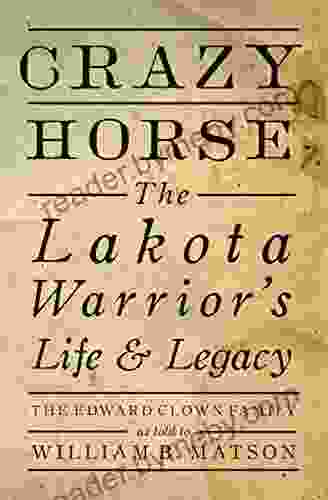
 William Golding
William GoldingCrazy Horse: The Lakota Warrior's Life and Legacy
In the annals of Native...

 Hector Blair
Hector BlairMildred and Richard Loving: The Inspiring Story of...
Mildred and Richard Loving were an...
4.5 out of 5
| Language | : | English |
| File size | : | 21778 KB |
| Text-to-Speech | : | Enabled |
| Screen Reader | : | Supported |
| Enhanced typesetting | : | Enabled |
| Print length | : | 395 pages |
| Lending | : | Enabled |


